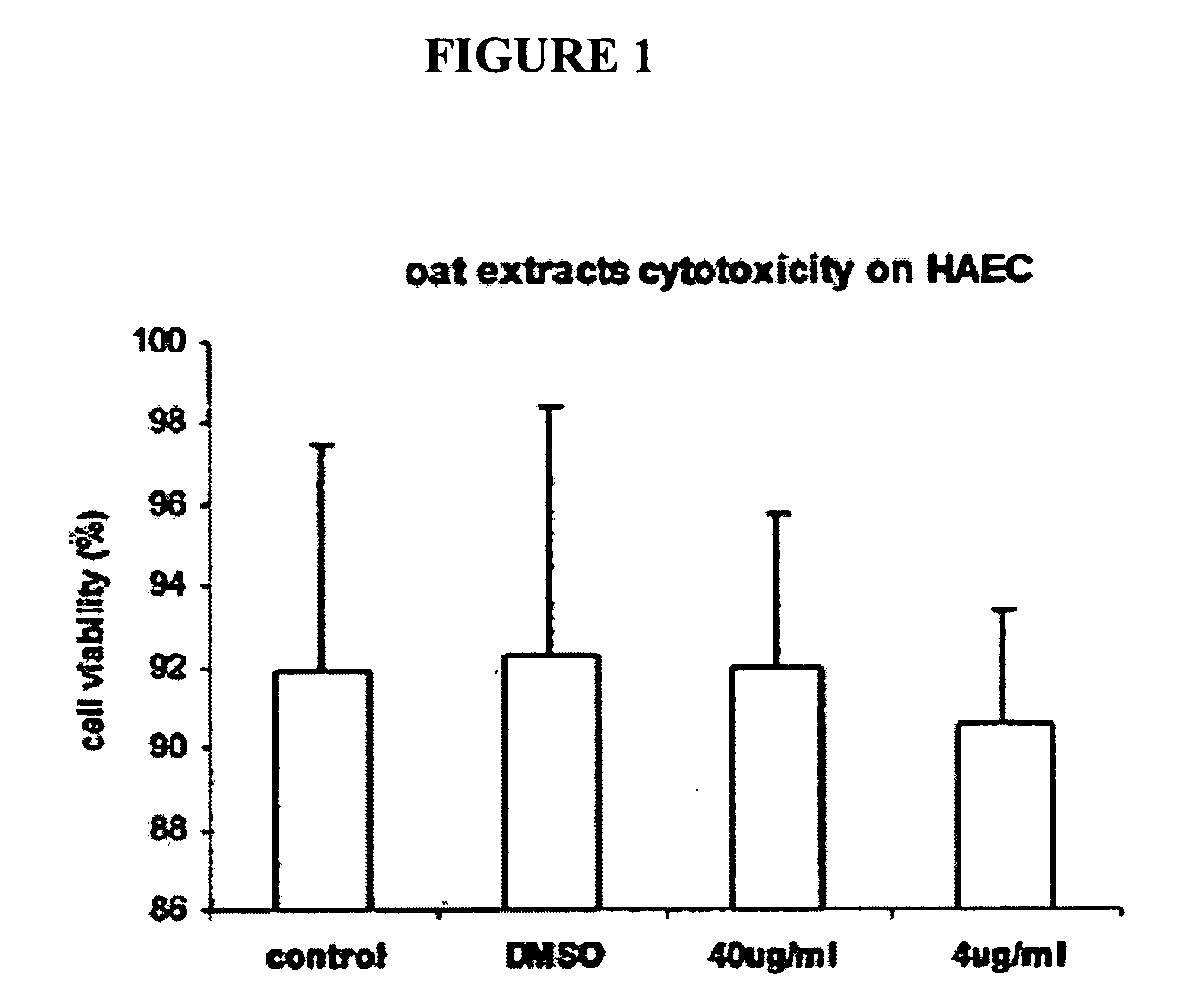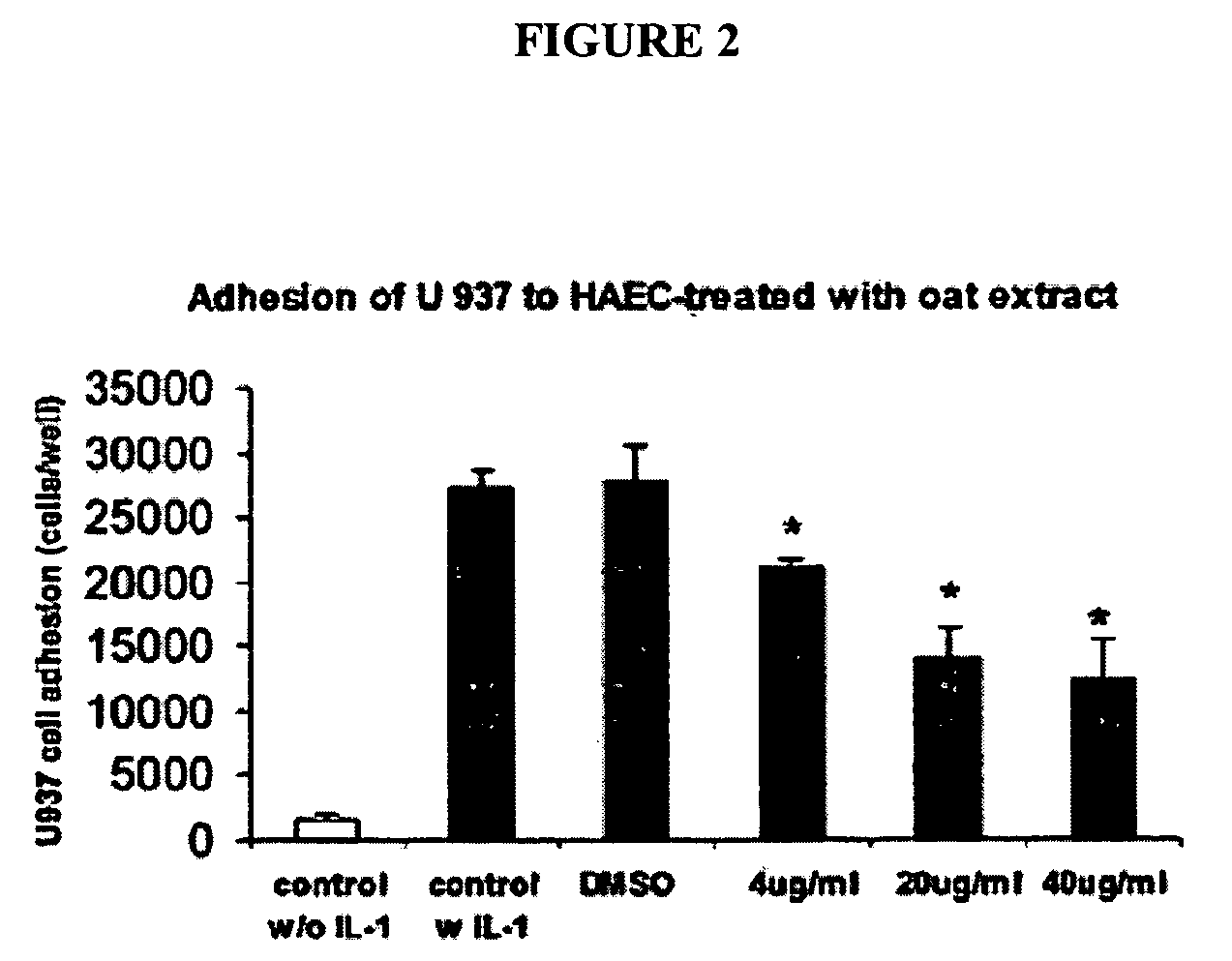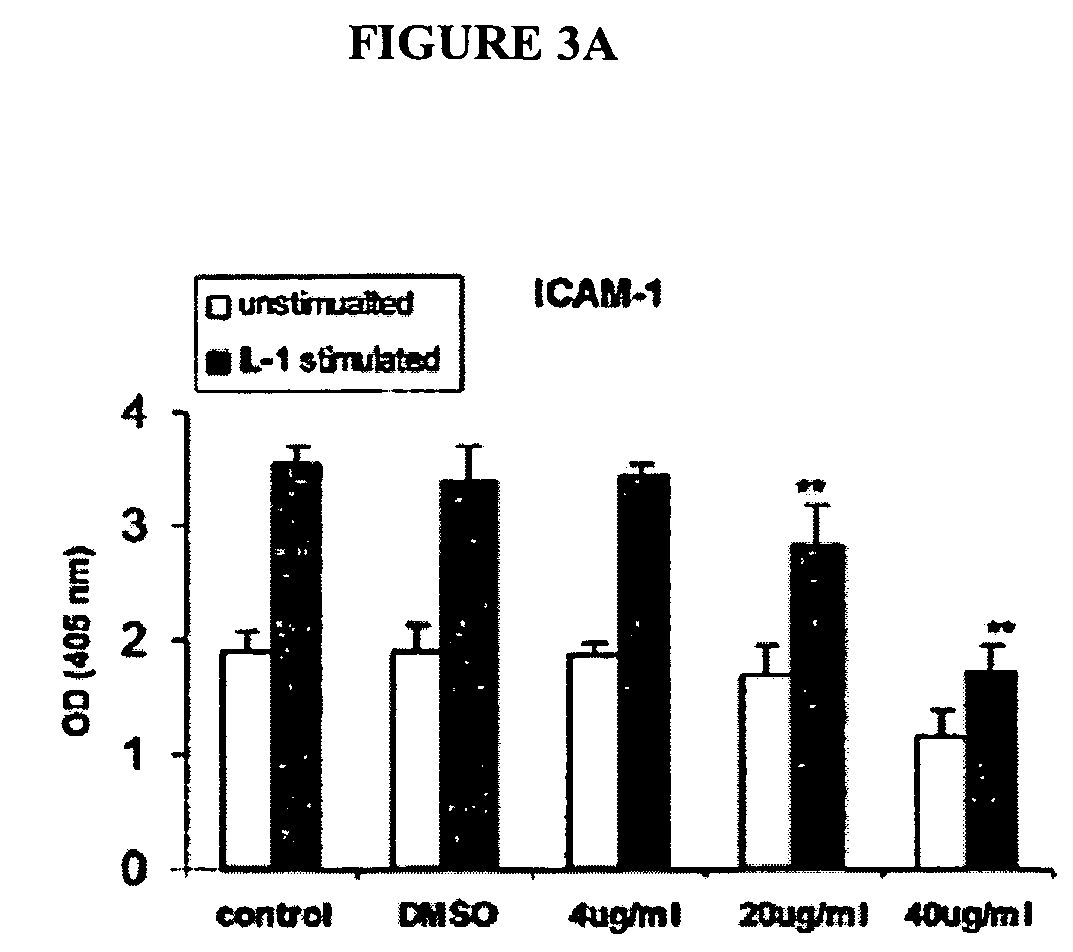Therapeutic avenanthramide compounds
a technology of avenanthramide and compounds, which is applied in the field of phenolic compositions and extracts derived from oats, can solve the problems of increased platelet aggregation, abnormal vasospasm, and impaired vasodilatation, and achieve the effect of slowing down the progression of diseas
- Summary
- Abstract
- Description
- Claims
- Application Information
AI Technical Summary
Benefits of technology
Problems solved by technology
Method used
Image
Examples
example 1
Materials and Methods
(i) Materials
[0165] FBS was purchased from GIBCO (Grand Island, N.Y.). Propidium iodide (PI) and DNase-free RNase were obtained from Sigma (Saint Louis, Mich.). Monoclonal antibody against pRB (14001A) was obtained from Pharmingen (San Diego, Calif.). Anti-phosphorylated pRb and anti-p53 antibodies were from Cell Signaling (Beverly, Mass.). p21 (C-19, sc-397) was purchased from Santa Cruz Biotechnology, Inc. (Santa Cruz, Calif.). Anti-CyclinD1 and anti-p27kip antibodies were from Sigma. ECL Western assay kit (RPN 2108) was obtained from Amersham Pharmacia Biotech (Piscataway, N.J.). The BCA protein assay kit was purchased from Pierce Chemical Company (Rockford, Ill.).
(ii) Cell Culture
[0166] HAEC were purchased from Clonetics Laboratories (San Diego, Calif.) and cultured in MCDB-131 medium (Sigma Chemical, St. Louis, Mo.). Passages 6-8 were used in this study. The culture medium contained 2% fetal bovine serum (FBS) (Gibco, Grand Island, N.Y.), 2 mmol / L L-g...
example 2
Cytotoxicity Test
[0183]FIG. 1 shows oat extracts and DMSO cytotoxicity on HAEC. Confluent human aortic endothelial cells (HAEC) were incubated with 0, 4 and 40 μg / mL oat extracts and 0.04% DMSO for 24 h at 37° C. Cytotoxicity was measured by Trypan blue exclusion test. Data are the mean ±SD of 3 experiments, each performed in triplicate. *p<0.05, **p<0.01 compared with control. Oat extract had no cytotoxicity on HAEC up to the 40 μg / mL concentration tested. 0.04% DMSO in MCDB-131 medium solution showed also no toxicity on HAEC during 24 hr incubation.
example 3
Effect of Oat Extract on Monocyte-HAEC Adhesion
[0184] The effect of oat extracts on monocyte-endothelial cell adhesion is shown in FIG. 2. Confluent human aortic endothelial cells (HAEC) were incubated with 0, 4, 20 and 40 μg / mL oat extracts for 24 h at 37° C. The HAEC were then stimulated by interleukin (IL)-Iβ (5 μg / mL) at 37° C. for 6 h. A total of 107 U937 cells were added onto HAECand incubated at 37° C. for 30 min. The adhesion of U937 cells to HAEC was determined as described in Example 1. Data are the mean ±SD of 3 experiments, each performed in triplicate. *p<0.05, **p<0.01 compared with control. There was trivial adhesion of U937 to HAEC without IL-1β stimulation. Pre-treatments of HAEC with oat extracts or DMSO contributed little to that basal adhesion (data not shown). However, when HAEC was stimulated with 5 ng / mL IL-1β for 6 h, their adherence to U937 cells increased (p<0.01) (FIG. 2). Pretreatment of HAEC with oat extracts for 24 h before activation with IL-1β signif...
PUM
| Property | Measurement | Unit |
|---|---|---|
| concentration | aaaaa | aaaaa |
| concentration | aaaaa | aaaaa |
| concentration | aaaaa | aaaaa |
Abstract
Description
Claims
Application Information
 Login to View More
Login to View More - R&D
- Intellectual Property
- Life Sciences
- Materials
- Tech Scout
- Unparalleled Data Quality
- Higher Quality Content
- 60% Fewer Hallucinations
Browse by: Latest US Patents, China's latest patents, Technical Efficacy Thesaurus, Application Domain, Technology Topic, Popular Technical Reports.
© 2025 PatSnap. All rights reserved.Legal|Privacy policy|Modern Slavery Act Transparency Statement|Sitemap|About US| Contact US: help@patsnap.com



